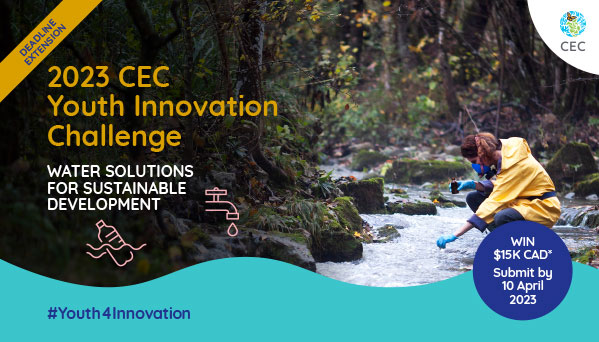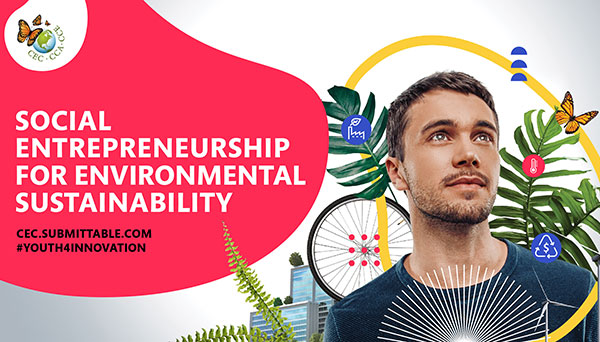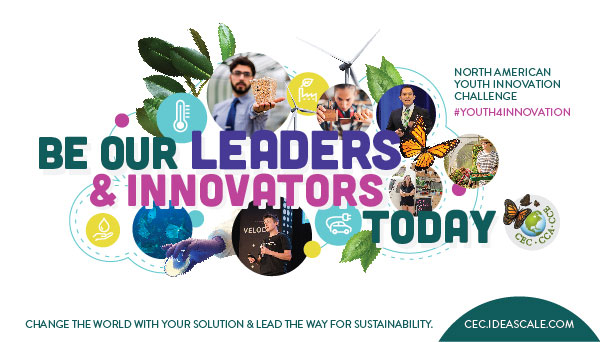How green is your dream?
North American youth aged 18 to 26 were invited to enter the Commission for Environmental Cooperation’s (CEC) innovation challenge to compete for C$5,000 in seed funding and a chance to present their idea to North America’s top environmental officials at the 2017 CEC Council Session in Charlottetown, Prince Edward Island, Canada.
Over 160 ideas were ultimately evaluated by the CEC Joint Public Advisory Committee and nine semifinalists were invited to develop their innovative ideas into full proposals.
Three winning projects were selected by a panel of judges consisting of government officials from Canada, Mexico and the United States.

Winners of the 2017 CEC Youth Innovation Challenge Announced

Small-scale Waste to Energy
Vanessa Fiore and Adam Wali
The challenge topics our project will be addressing are the reduction of air pollutant emissions and the diversion/reduction of food waste. We are proposing an innovative, all-in-one device that converts food waste into biogas, and biogas into energy, to create electricity to power businesses.

ROCAPET - Sustainable Structural Concrete
Ernesto Alonso, Tilo Daniel Hernández Cadena and José Luis Hernández García
ROCAPET arises from the idea of using PET (polyethylene terephthalate) in the construction industry to make use of a waste material that, in Canada, Mexico, the United States, and other countries, has yet to be used extensively in the sector.

Restaurant Waste to Superfood Powder
Kristian Krugman and Reyanne Mustafa
Soulfull is a company dedicated to providing nutrient-rich products that are healthy both for our bodies and also for our environment by reducing food waste while minimizing our carbon footprint.
Other Challenges
For more information, contact:
Georgina O’Farrill
Head of Unit, Communications, Outreach and Engagement
(514) 350-4336





